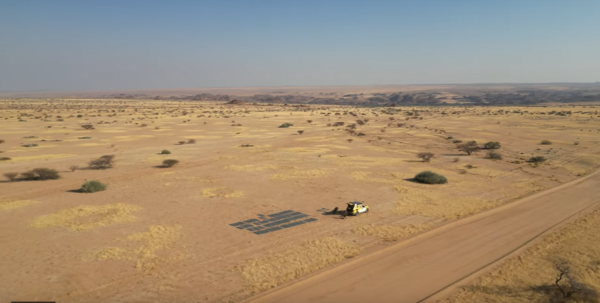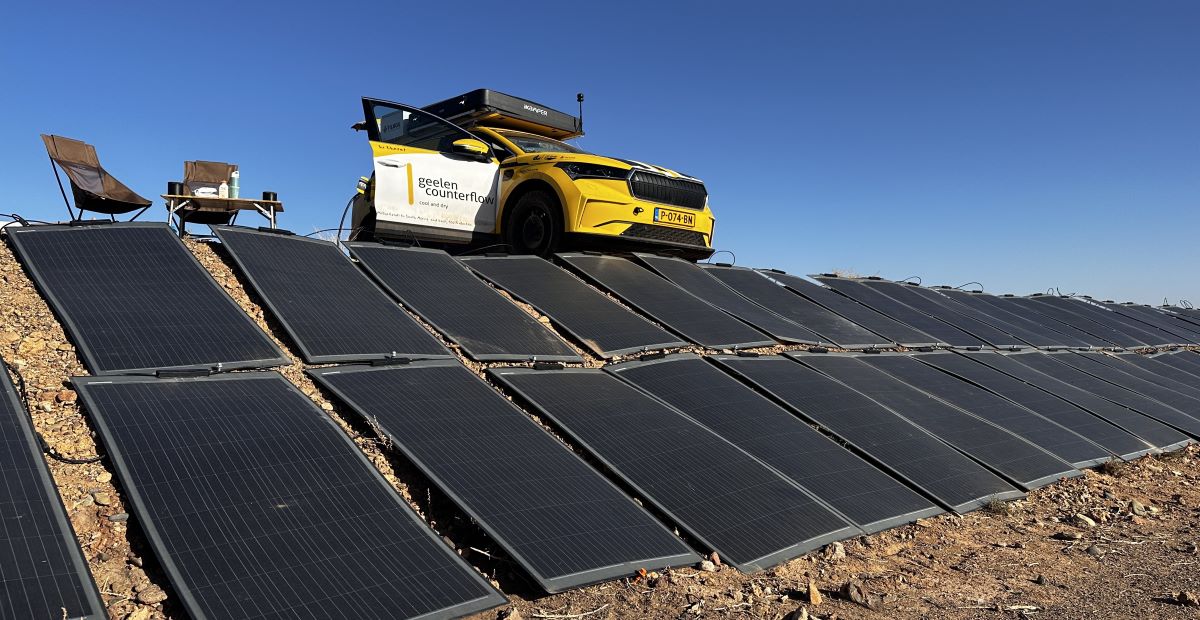A Dutch team intent on showing that “it is possible to implement sustainability in everybody's daily lives” travelled over 38,000 km by electric car from the north to the south of the African continent and back. They used solar panels they brought with them to make up for a spotty charging infrastructure.
Maarten van Pel and Renske Cox left the Netherlands in November 2022 to circumnavigate the African continent. They travelled 38,238 km. The journey took 14 months with 1225.5 hours of driving. “Of our total trip through Africa we used 43% solar,” Renske Cox told pv magazine.
The Morocco to Capetown leg of the trip used solar 54% of the time, sourced from their 60m2 of solar panels with 10.8 kW capacity. “The rest of the energy was charged with wall outlets, and sometimes custom made 3 phase setups,” said Cox.
The team took sixty 180 W solar panels made by Austrian module manufacturer DAS Energy on the road. Each weighs 3 kg/m2 and measures 1/10 the thickness of conventional panels, according to Cox.
They traveled in a Skoda Enyaq iv80 built in 2021 with a 77 kWh battery that is chargeable with either AC or DC power. Its default range is 537 km, but fully loaded for the expedition with all-terrain tires, a tent, storage box and solar panels, the range was 400km, according to Cox.
It was not a luxurious trip. The two slept in a rooftop tent and turned the expedition vehicle into a self-sufficient home for the duration. They had to curtail the last part of the journey as the North East was deemed too dangerous at the time. The car had to be shipped from Kenya to Greece to be able to complete the final leg.
Locating uninterrupted sunny ground for the panels at an angle with good irradiation was a challenge they met along the way. “When we started our expedition in Morocco in November, the optimal angle for our solar panels was roughly 60 degrees. This was really steep, so we had to be creative,” according to the team's logbook. They found a clear space on a hill and used pegs from home to hold the panels in place. Related challenges they noted: shading caused by leaves, animals, and smoke.
The video below shows the team packing up the panels.
Popular content
The Enyaq was equipped with 460 W of custom vehicle-integrated PV (VIPV) panels based on 135 Maxeon-Sunpower back-contact cells from Dutch specialist Mito Solar. They were installed on the hood, rooftop tent, and rooftop storage box to power the team’s appliances, such as an induction cooking stove, fridge, lighting, and water pumps, as well as to charge electronics. “The panels of Mito Solar charged a separate 3 kWh battery in the car,” said Cox.
A prototype of a custom-designed DC-DC converter was connected to the panels to charge the car battery on the road. It minimized the amount of equipment needed but it also decreased the energy losses due to switching to AC and back, according to Renske.
“Normally about 20% of the energy is lost due to switching from DC to AC and back. Other people interested in solar travel have expressed interest in the solution, as well as those who want to charge a car at their home without energy losses, so now we are working on a consumer version with Mito Solar,” said Cox.
To complete the journey using fossil fuel would have required 2,669 liters of petrol.

This content is protected by copyright and may not be reused. If you want to cooperate with us and would like to reuse some of our content, please contact: editors@pv-magazine.com.


By submitting this form you agree to pv magazine using your data for the purposes of publishing your comment.
Your personal data will only be disclosed or otherwise transmitted to third parties for the purposes of spam filtering or if this is necessary for technical maintenance of the website. Any other transfer to third parties will not take place unless this is justified on the basis of applicable data protection regulations or if pv magazine is legally obliged to do so.
You may revoke this consent at any time with effect for the future, in which case your personal data will be deleted immediately. Otherwise, your data will be deleted if pv magazine has processed your request or the purpose of data storage is fulfilled.
Further information on data privacy can be found in our Data Protection Policy.